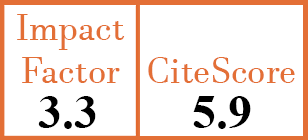Full Papers
Th1/Th2 associated transcription factors and cytokines in pregnancies with systemic lupus erythematosus
S. Zhang1, X. Han2, W. Liu3, G. Yin4, Y. Jiang5, J. Wang6
- Department of Rheumatology and Clinical Immunology, The Affiliated Hospital of Qingdao University, Qingdao China.
- Department of Rheumatology and Clinical Immunology, The Affiliated Hospital of Qingdao University, Qingdao China.
- Department of Rheumatology and Clinical Immunology, The Affiliated Hospital of Qingdao University, Qingdao China.
- Department of Rheumatology and Clinical Immunology, The Affiliated Hospital of Qingdao University, Qingdao China.
- Department of Rheumatology and Clinical Immunology, The Affiliated Hospital of Qingdao University, Qingdao China.
- Department of Rheumatology and Clinical Immunology, The Affiliated Hospital of Qingdao University, Qingdao China. wangjibo2005@126.com
CER17815
2025 Vol.43, N°1
PI 0105, PF 0111
Full Papers
PMID: 39360363 [PubMed]
Received: 03/05/2024
Accepted : 01/08/2024
In Press: 17/09/2024
Published: 23/01/2025
Abstract
OBJECTIVES:
Th1/Th2 shift occurs during pregnancy. Systemic lupus erythematosus (SLE) flares may induce the dysregulation of Th1 and Th2 cells. We aimed to investigate the dynamic changes of Th1/Th2 associated transcription factors and cytokines in patients with SLE during pregnancy.
METHODS:
Twenty-five pregnant patients with SLE and twenty-two healthy age-matched women served as controls from September 2021 to March 2022 were enrolled in the study. Real-time quantitative reverse transcription polymerase chain reaction analysis of peripheral blood mononuclear cells were performed to measure the expression of Th1 specific transcription factors T-bet, cytokine IFN-γ, and Th2 specific transcription factors GATA3, cytokine IL-4. The main statistical analysis methods were t test, Mann-Whitney U-test, Pearson correlation and Spearman rank correlation analysis.
RESULTS:
The mRNA level of IFN-γ and the relative expression of T-bet/GATA3 and IFN-γ/IL-4 in SLE patients were significantly higher than those in healthy individuals, whereas the GATA3 expression is lower in pregnant patients with SLE (p<0.001, p<0.05, p<0.05 and p<0.01 during the whole pregnancy, respectively; p<0.05, p<0.01, p<0.05 and p<0.05 specifically for the 3rd trimester, respectively). There were significant correlations between T-bet and IFN-γ (r=0.492, p<0.05), and between T-bet/GATA3 and IFN-γ/IL-4 (r=0.482, p<0.05).
CONCLUSIONS:
Our work indicates that in SLE patients Th1/Th2 shift is blocked with up-regulation of Th1 cell function and insufficient Th2 polarisation during pregnancy, which may be involved in adverse pregnancy outcomes.


